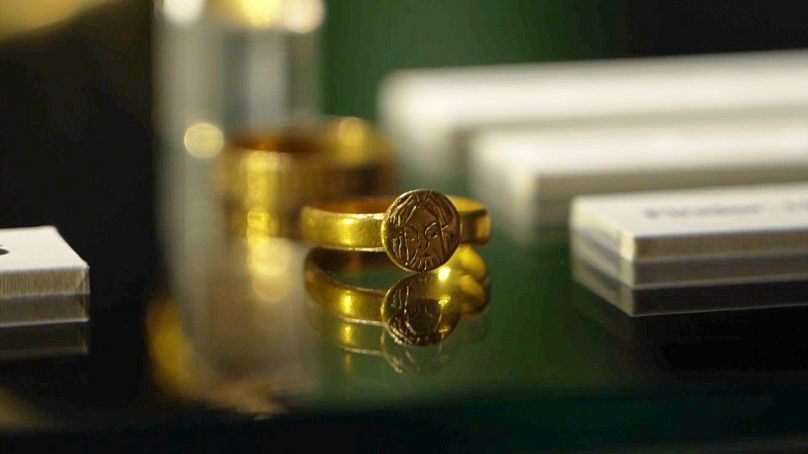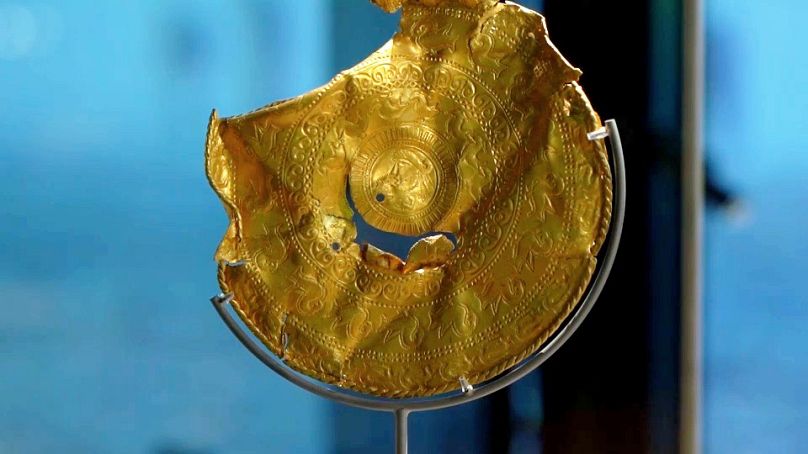Denmark’s National Museum is showing an array of medieval treasures unearthed by hobbyist metal detectors and history buffs.
Roman gold coins, rings, precious stones and other treasures have been dug up by Danish "detectorists".
The National Museum of Denmark is paying tribute, not to professional archaeologists, but to amateurs with metal detectors.
Curators say it’s all thanks to a Danish law that obliges metal detectorists to report and hand over their discoveries to museums, in exchange for a finder’s fee.
“When the metal detector sort of came in in the eighties, there were some very wise museum managers who said 'we need to work with these people,'" says curator Line Bjerg.
Mutual collaboration
Hjalte Wadskjaer Molgaard is a hobbyist working with Denmark's national museum. He got the metal detecting bug from a young age.
"I have always loved history", he says.
"It started with the Second World War, the First World War and Titanic, actually. And then suddenly, I really became interested in prehistory."
One of his discoveries is on display in the exhibit - a golden medieval ring that features the face of Jesus Christ.
“I walked for like six hours in the rain without finding anything, but I was just really feeling happy,” he laughs.
Stunning discoveries
Ole Ginnerup Schytz is a novice metal detectorist who discovered what can be considered one of the greatest gold treasures in Danish history.
The Dane had only just acquired a metal detector and had been given permission to walk on a farmer’s field belonging to an old classmate. After a few hours, his metal detector began to beep, and he unearthed almost one kilogram of gold.
"Well, I didn't know that it was gold when we found the first couple of items, we had no idea,” says Schytz.
“Actually, the only thing we knew it was not, that was gold. Because we knew that you hardly ever find gold as an amateur detector."
Archaeologists now say the hoard, discovered in the village of Vindelev, near Jelling, had been buried for around 1,500 years. It contains almost one kilogram of gold, including large medallions the size of saucers and some Roman coins that had been made into jewellery.
The Vindelev Hoard is now going on display as part of the exhibit, the first time it’s been seen in Copenhagen, after a brief show in Veijle, not far from where it was discovered.
Curator Line Bjerg hopes the exhibit may inspire others to pick up a metal detector. She says it’s also an example of how history is being uncovered by ordinary Danes.
“I want the audience to understand that our museum is being built by ordinary people,” she says.
“The hunt for Danish history” opened at Denmark’s National Museum in Copenhagen on Saturday 4 February and will run for a year.













